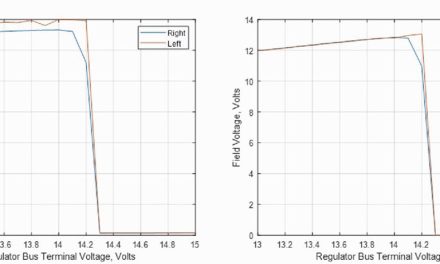By Gary Evans and George Andrew Coats
Editor’s Note: While this article is written with business aircraft transactions in mind, the majority of the concepts and advice apply to purchasing or selling personal aircraft as well. During the 20 years our firm has practiced aviation law, we have been honored to represent a wide variety of aircraft buyers, sellers, and lenders in business aircraft transactions. We have identified many factors that can make a significant difference between a smooth, uneventful, and productive transactional experience, versus those that seem to take on a life of their own due to unnecessary and avoidable drama and complexity. The concepts discussed herein should prove beneficial to aircraft buyers, sellers, and practitioners who handle aviation transactional work, and those who only occasionally handle aviation transactional matters.
Many of these factors can have a direct impact on whether your next aircraft transactional experience is a positive one or something to be avoided in the future.
Have a good transactional team
Before the first call to a seller or broker, and before you look at the first candidate aircraft, you need to assemble a good team to assist you in formulating and executing the transactional strategy that best suits your needs. No two buyers are the same, and no two aircraft transactions are the same. Some buyers have extensive in-house aviation expertise, some have no aviation experience at all, and many fall somewhere in between. Making an investment in good counsel at the beginning of a transaction can save significant expense later if a transaction goes wrong. Depending on the circumstances and the buyer’s specific needs, a business aircraft buyer should plan to hire experienced aviation counsel to advise on transactional, operational, risk management, and tax planning aspects of a prospective aircraft purchase. This is not a one-size-fits-all process. Hire aviation counsel that communicates well with you, understands your needs, and will work with you proactively to develop and execute your purchase. Do not be afraid to discuss transactional budgets and do not be afraid to pass on counsel that perceives their role as serving as your “business prevention department.”
Depending on the transaction, your team may also include a broker representing your interests, your in-house aviation leadership (i.e. flight department manager), an aviation-knowledgeable CPA, an aviation maintenance consultant (to assist in defining the pre-purchase inspection scope, reviewing logbooks and maintenance records, and shepherding the aircraft through the pre-purchase inspection process), and your aviation insurance broker. If you intend to have your aircraft operated by a Part 135 carrier, or on your behalf by a management company, you should involve that vendor as early in the process as practical.
Expect and insist that your counsel is focusing on your priorities
We have seen too many situations where an attorney representing the other party in an aircraft transaction will insist on inordinate time and effort to negotiate issues that, remarkably, turn out to be of little to no importance to their client. Considering that the amount of time it takes to accomplish a given transaction will depend to a large degree on how much interaction is required between the buyer’s and seller’s counsel, it is in all parties’ best interest to determine what is important, and what is less important, to the principals in a given aircraft transaction. As an effective advocate, your aviation counsel must develop an understanding as to those things that are important to you, and those things that are less important, which will directly impact your counsel’s ability to have cost-effective and appropriate communications with opposing counsel. It is almost impossible to have too much communication among clients and counsel when it comes to buying and selling large, complicated, and expensive items like business jet and turboprop aircraft.
The buyer inspects, the seller corrects
The fundamental nature of every pre-owned aircraft transaction is that the buyer is going to purchase the aircraft in an “as-is,” “where-is” condition, with almost no exceptions to this general rule. Conversely, the buyer only has one opportunity to verify that the aircraft is in the condition required for closing. The seller of an aircraft will almost always invariably claim that he/she knows the exact condition of the aircraft, but the more common truth is that neither the buyer nor the seller will know the condition of the aircraft until it goes into inspection, and the parties should always leave room to negotiate depending upon what the results of the inspection reveal. A very general rule for many business aircraft is that the cost to correct discrepancies can frequently be approximated to be equal to three times the flat rate of the inspection at issue, which we have also found to be pretty accurate over the years. While there is typically very little latitude in varying the definition of what constitutes an “airworthy” aircraft, the parties can always address any risk concerns they may have by managing the extent of the inspection, and/or managing the remediation exposure that the seller may have as a result, both of which will help ensure a drama-free transaction.
Never ask a seller to provide any representations or warranties
Over the years many lawyers have endeavored to insert representations regarding the aircraft that will survive closing, and in some cases obligations that may survive closing as well. This is an invitation to post-closing disputes and should always be resisted. A pre-owned aircraft seller is not the manufacturer of the aircraft and should not be expected to provide any representations and/or warranties other than that the aircraft will be delivered with good and marketable title, which the seller should agree to defend forever. In some cases, lawyers will insert “delivery conditions” into a proposed aircraft purchase agreement, although, if used, those types of delivery conditions should never be allowed to survive closing, as doing so will create a significant conflict between those delivery conditions in the manner in which the aircraft is being conveyed to the buyer. In almost every jurisdiction, the entire concept of purchasing an item “as-is,” “where-is” means that the duty to inspect the item is completely and totally on the buyer, and that the buyer can never go back on the seller for things that did not survive closing. Aircraft purchase agreements should, as one of their many objectives, seek to discourage potential future disputes with the parties post-closing, and many of our aircraft purchase agreements specify the exact damages that may be recovered in the event of any breach, which encourages the parties to go their separate ways if the transaction simply does not work out.
Use Microsoft Word
No matter how you feel about Microsoft, Word has matured into the preeminent word processor in the industry with one of its best attributes being the ability to track virtually unlimited changes to the document as it matures, including the author responsible for those changes. Some law firms will return a document with one version in Word, and a separate document in PDF, purporting to track the changes that have been made. The problem with this approach is that the PDF may not show all changes and may not show changes that have been rejected. There is literally no excuse for not tracking every change that is made to a proposed aircraft purchase agreement in order that all of the parties to a transaction can fully track, understand, and appreciate all those changes in moving toward a successful closing. Closely related to this concept is that no lawyer should ever make a change to a document without informing the other side of the change, inadvertent or not. Lawyers should be able to rely upon representations from opposing counsel that a document has not been modified from the last version that was circulated and is currently available for execution purposes. We frequently like to place into the document name things like “clean, final, execution version” to remove any doubt that the final document is what all parties have agreed upon. There has to be a fundamental level of trust in any transaction, as a lack thereof will only increase the transactional cost and expense to all concerned.
Make/return all communications promptly
Most aircraft transactions are time sensitive. Sellers are typically in a bigger hurry to sell the aircraft than the buyer is in to purchase it, but these roles can sometimes be altered depending upon the particular facts and circumstances involved. Under almost all circumstances, however, there is typically a flurry of activity centered on the various stages of the transaction, including the initial preparation of either an offer or a letter of intent, establishing the agreed upon purchase price, deciding where the aircraft is going to go for inspection purposes and preparing and executing a mutually agreeable aircraft purchase agreement. Once these contractual issues are handled, many of the timing matters shift to those actually performing the services related to the aircraft, including inspection and remediation. For that reason alone, we frequently tell our clients that they should never be waiting for us to perform any of our services, as we will unfortunately be forced to rely upon other service providers in determining how quickly the aircraft can be prepared for closing. Because of the need for the client to be the ultimate decider with respect to many aspects of the transaction, communications can be demanding on both sides. However, unlike many other areas of the law, and due to the time-sensitive nature of most of these types of transactions, lawyers involved in aircraft transactions have a higher burden to communicate with one another on a timely basis in order to ensure that the transaction moves forward in an orderly and predictable fashion.
Don’t hesitate to rely upon your escrow agent
Escrow agents, like aircraft brokers, can either be your best friend or your worst enemy. We have fortunately been able to deal with many superb people in both areas for many years. While the fees that are charged are typically very reasonable compared to the purchase price of most business aircraft, many lawyers fail to use the escrow agent as a key member of the transactional team, instead insisting upon performing things themselves at additional cost and expense to their clients. Aircraft escrow agents performing FAA filings are physically located in Oklahoma City, Oklahoma, and have ready access to the FAA registry and filing windows. Conceptually, aircraft escrow agents allow buyers and sellers to simultaneously disburse funds and file the documents memorializing transfer of ownership of an aircraft, with neither side being forced to assume that the other will perform the final act required to close. While the adoption of the use of electronic/digital signatures has made our jobs much easier in some respects, since we no longer have to worry about overnighting packages to Oklahoma City for closing purposes, and can instead digitally execute most closing documents through service providers such as DocuSign, the moment in time that the ownership of the aircraft is transferred from seller to buyer is frequently identified as the time those documents are filed with the FAA. Therefore, a responsible escrow agent should always be viewed as your best ally in ensuring that the transaction is completed appropriately and in a timely manner. Your aviation counsel should rely upon the escrow agent’s acumen in that regard and should not duplicate tasks that the escrow agent should be handling in exchange for the fees charged. Likewise, your aviation counsel should give you the benefit of his or her experience with escrow agents to help you select the best escrow agent for your transaction.
Be proactive about aircraft utilization and planning
No matter whether you are a first-time aircraft purchaser or a veteran of previous flight operations, be prepared to work through the best strategy for your aircraft purchase, and your subsequent aircraft operations, including sales/use tax planning, ad valorem tax planning, aircraft rendition and reporting matters, Federal Aviation Regulations impacting the manner in which the aircraft can be operated, including under FAR 91.501, commercial flight operations, rental and/or leasing options that may be available, and other factors that tend to be very state specific. As part of your initial discussion with your aviation counsel, expect a comprehensive briefing that you can review and use to base such decisions upon. Over the years we have developed an appreciation for the idea that one of our best allies is a well-informed client. You should expect your aviation counsel to keep you well-informed with respect to aircraft and aviation matters. Such efforts will always inure to your best interest, financially and otherwise. In similar fashion, be proactive about planning for the tax implications of your purchase. Depending on the buyer, the aircraft, and the location in which the aircraft is to be based, tax issues can include state sales and use tax, local ad valorem (property) tax, depreciation planning, federal excise tax, IRS considerations with regard to personal use of business aircraft, and more. Many of the tax considerations change often, so a buyer’s experience with a prior purchase may be substantially different from the next purchase. Aviation counsel and an aviation-knowledgeable CPA are invaluable resources to prevent expensive surprises.
Beware of forms
Each aviation transaction is unique. In our experience, parties to aircraft transactions are best served by agreement and supporting documents that accurately and fully reflect the parties’ intent, rather than buyers and sellers attempting to modify the terms of a transaction to fit some preexisting form of agreement. Your aviation counsel should be developing (or negotiating) documents that memorialize the transaction negotiated with the other side, not selling you some preexisting form for you to comply with. Similarly, beware of brokers or other participants in an aircraft transaction who step outside their role to prepare (or supply) transactional documents or give tax advice. There should be no pride of authorship with respect to which firm commences the work that needs to be accomplished. The goal is to create the documents necessary to memorialize and accomplish the transaction in the most accurate and cost-effective manner for all concerned.
Scan, scan, scan
Aviation transactions are now largely electronic in nature. Purchase agreements, transactional documents and loan packages are now routinely created, negotiated, edited, and executed electronically, with no paper copies necessary. Large file transfer services permit rapid and remote review of logbooks and maintenance records, as does providing access to computerized maintenance tracking for any given aircraft. Each member of your transactional team should be comfortable with operating in a paperless environment.
Don’t expect to finish anyplace but the 50-yard line
From the time almost any transactional matter commences, there will be some level of tension between what the buyer wants with respect to the aircraft at delivery, and what the seller is willing to provide. In the typical aircraft purchase/sale transaction, the seller will be required to place the aircraft in “airworthy” condition for closing purposes, which has been interpreted over the years as the aircraft meeting its type certificate and being safe to fly. Accordingly, the only thing that generally escapes the definition of “airworthy” are things of a cosmetic nature, although some manufacturers even have minimal levels of cosmetics defined within their aircraft type certificate. The foregoing is largely viewed as an “objective” standard, therefore transactional lawyers should not spend inordinate amounts of time trying to redefine what “airworthy” means, and should instead focus upon those things that are of significant importance to their respective clients. For example, in a situation where a seller may be concerned about maximum potential exposure to remediation cost and expense, limitations could be defined within the aircraft purchase and sale agreement, above which the seller would have no financial obligation, or would be permitted to withdraw from the transaction. Another general rule is that the buyer is free to walk away from the transaction until such time that the aircraft is technically accepted, following the inspection. What this means is that both parties begin to spend money on the potential aircraft transaction almost from the inception of the purchase/discussions. In some unfortunate situations that we have seen over the years, lawyers will decide that being an effective advocate for their clients means that they must make an issue out of virtually every term and condition that may appear in an aircraft purchase agreement. In other words, instead of starting close to the 50-yard line, which is invariably where all these transactions end up, some lawyers will start about the goal line, knowing that each and every yard given up by either side will only be given up following extensive discussions between the lawyers involved in the transaction. This is never a good strategy for buyer or seller, and quite frankly no aircraft owner has ever benefited from trying to advocate for a completely one-sided document that no transactional participant would ever willingly sign to begin with. Making the transaction as difficult as possible for all concerned has never been and will likely never be an effective transactional strategy, despite the financial benefit to law firms from the inordinate amount of attorneys’ fees that may be associated with a particular transaction. While the aggregate amount of time that it may take to properly handle an aircraft transaction depends on many variables, the mere fact that lawyers are dealing with a more expensive aircraft should never translate into massive numbers of hours being required to handle transactions that, at their core, consist of certain fundamental documents, no matter the value of the aircraft being sold and/or purchased. Instead, regardless of the size or price of the aircraft, both buyer and seller should strive to create a purchase agreement and transactional documents that reflect the core terms of the deal they negotiated, provides fair and predictable solutions for potential contingencies, and serves as a framework to complete the transaction. Such an approach will almost always result in a smoother and more amicable transaction.
Adhering to these suggestions outlined above will help ensure the most cost-effective aircraft transactions attainable, making the efforts required to handle a given transactional matter as reasonably as can be under the circumstances presented. Please see the Coats & Evans, P.C. website at www.texasaviationlaw.com for additional information.






